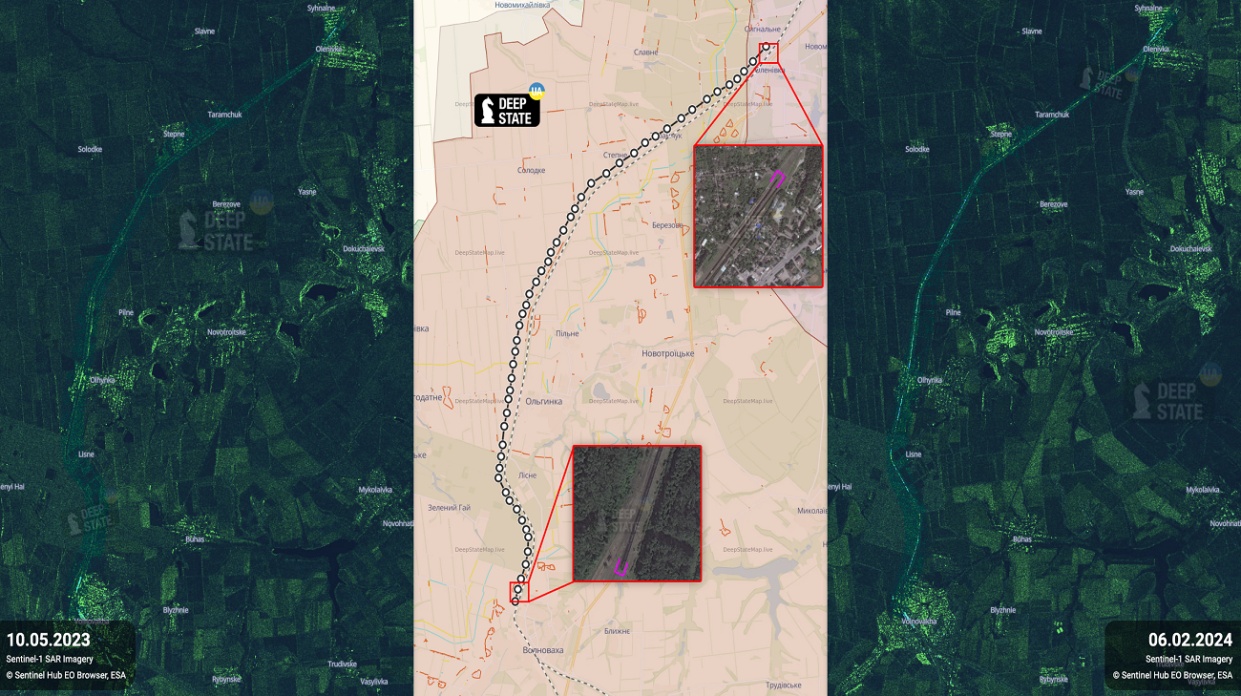ISW analyses why Russians need 30km long "tsar train" barrier in Donetsk Oblast

Experts at the Institute for the Study of War (ISW) have suggested that the 30km long so-called "tsar train" between the settlements of Olenivka and Volnovakha in occupied Donetsk Oblast has likely been created as a defensive line against future Ukrainian offensives.
Details: Analysts believe that Russian forces have built a 30km barrier, dubbed the "tsar train", in occupied Donetsk Oblast, likely to be used as a defensive line against future Ukrainian offensives.
The ISW report notes that satellite images dated 10 May 2023 and 6 and 10 February 2024 reveal that Russian troops have constructed a long line of railcars over the past nine months, stretching from occupied Olenivka to Volnovakha.
DeepState reported that Russian forces have assembled over 2,100 freight railcars into a 30km long train.
Russian troops reportedly began putting the train together in July 2023. The Russians likely intend to use it as a defensive line against future Ukrainian offensives.
The railway line between Olenivka and Volnovakha is about six kilometres from the front, which ISW estimated to be southeast of the village of Novomykhailivka at its closest point, and is located on a section of the battlefield that was relatively quiet when Russian forces began construction.
Analysts noted that Russian forces had recently made minor territorial gains in the area.
At the same time, the ISW suggests that "the Russians could have assembled the train for other purposes as well".
To quote the ISW’s Key Takeaways on 11 February:
Ukrainian President Volodymyr Zelenskyy appointed Lieutenant General Oleksandr Pavliuk as Ukrainian Ground Forces Commander, replacing current Ukrainian Commander-in-Chief Colonel General Oleksandr Syrskyi.
Russian forces appear to have constructed a 30-kilometre-long barrier dubbed the "tsar train" in occupied Donetsk Oblast, possibly to serve as a defensive line against future Ukrainian assaults.
Ukrainian military observers indicated that the Russian defence industrial base (DIB) is not as productive as Russian authorities portray it to be, but that the Russian DIB is still capable of sustaining Russia’s war effort.
Russia’s current limited DIB production capacity and insufficient serial tank production lines are not guarantees that Russia will struggle to produce enough material to sustain its war effort at its current pace or in the long term.
Russian forces made confirmed advances near Avdiivka and in western Zaporizhzhia Oblast amid continued positional engagements along the entire frontline.
CNN reported on 11 February that Russia has recruited as many as 15,000 Nepalis to fight in Ukraine, many of whom complained about poor conditions and lack of adequate training before their deployment to the most active frontlines in Ukraine.
Russian authorities continue efforts to solidify social control over youth and students in occupied Ukraine and to culturally indoctrinate them into Russian identity and ideology.
Support UP or become our patron!

